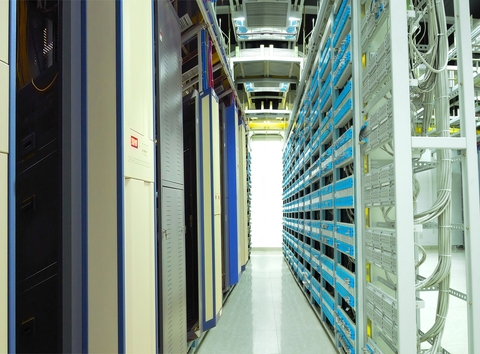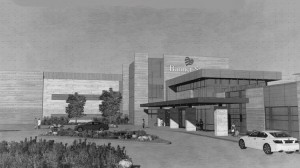Subscribe Now
MEP-T: Network Technology as the Fourth Utility
By Paul Boucher
It’s no secret that technology’s role in healthcare is increasing and evolving with every passing day.
 Meanwhile, with the exception of BIM and various mobile technologies, buildings are mostly being built in the same manner as 10-20 years ago. Technology and low voltage-related systems used to be an afterthought because of their minimal impact on the building operations and systems. Take for example, an ultra-high-tech computer chip factory built in Denver, Colo. in the 1980s. At that time, it embodied some of the latest technology. However, the factory had three low-voltage systems: access control, video surveillance and fire management. A factory of this complexity today could potentially have more than 30 systems to operate various controls, security, sensors and other systems.
Meanwhile, with the exception of BIM and various mobile technologies, buildings are mostly being built in the same manner as 10-20 years ago. Technology and low voltage-related systems used to be an afterthought because of their minimal impact on the building operations and systems. Take for example, an ultra-high-tech computer chip factory built in Denver, Colo. in the 1980s. At that time, it embodied some of the latest technology. However, the factory had three low-voltage systems: access control, video surveillance and fire management. A factory of this complexity today could potentially have more than 30 systems to operate various controls, security, sensors and other systems.
The industry often references “MEP” as mechanical, electrical and plumbing due to the intense nature of these scopes and considering they range from 30 to 40 percent of most healthcare project budgets. Given the growing cost and need for low-voltage technology, soon “MEP” will be known as “MEP-T” with the technology network as the fourth crucial utility.
Healthcare organizations are investing less in mega projects and more on infrastructure and technology (as well as outpatient and physician integration) due to the new requirements of the Affordable Care Act. Many new renovation and expansion projects are experiencing the challenges of interfacing with existing low-voltage infrastructure or implementing entirely new infrastructure. A healthcare provider has to consider the cost-benefit analysis of salvaging existing infrastructure or building new infrastructure to accommodate the rapidly advancing technology systems.
Historically, low-voltage systems have been provided by specialty subcontractors that work underneath electrical, mechanical, security and door subcontractors. These scopes of work are often times executed in a silo. However, if these systems are not carefully integrated from the beginning of the project, an influx of low-voltage coordination and clash issues will surface. These late coordination issues typically increase project cost and schedule during installation, commissioning and turnover. Considering all systems in an MEP-T approach can minimize these clashes and solve a problem before it becomes one.
Often times low-voltage subcontractors are interfacing with existing facilities that embody various digital and physical challenges. The digital challenges can be attributed to disparate networks being managed on multiple servers. This inefficient redundancy creates a ripple effect of additional operations cost associated with heating/cooling of extra network gear, numerous software licenses and maintenance contracts for equipment. Multiple control networks might also exist that are proprietary and thus difficult, if not impossible, to interface new programming. This results in the sub-optimal use of collected information due to multiple sources and management efforts. The physical challenges are typically comprised of accessibility, unorganized and unmarked cables and outdated technology gear.
Through research and project results, we have found that an MEP-T integrated approach to delivering low-voltage systems during construction can save roughly 8-27 percent, depending on project complexity. Low-voltage systems are becoming an increasingly valuable portion of the overall project budget. Based on 10 healthcare projects across the country, low-voltage accounted for roughly 5-10 percent of the overall budget, so savings are significant.
How to approach the fourth utility
For all healthcare organizations beginning new projects, the T in MEP-T should be just as much of a discussion topic in the schematic design phase as the structure and envelope. Facility operators will need time to thoroughly assess their infrastructure, understand evolving and available medical technology, review technology matrix dependencies and predict future growth of the facility.
At several JE Dunn projects, we’ve taken a fully integrated approach to incorporating network systems prior to construction commencing. This approach is working well at both Banner Harmony Hospital in Ft. Collins, Colo. and at the St. Joseph Catholic Health Initiative Replacement Hospital in Dickinson, N.D. Both of these large-scale hospitals (north of $50 million and more than 150,000 square feet) saw the value in approaching all low-voltage systems in a comprehensive approach, as the fourth utility of the hospital.
The project team should properly account for these technology considerations early in the budgeting and construction planning. Early emphasis placed on technology will help vet coordination challenges up front and reduce downstream issues and increased costs.
Project teams should be asking questions related to interoperability for central monitoring and control. It is critical to ensure new technology is both efficient and scalable. By striving for convergence in technology systems, it will generate a lower total cost of ownership for the technology investment. This will ultimately maximize the return on that investment.
Organizations should ensure that construction managers have the proper expertise on technology systems. Extensive expertise and management will better orchestrate this process. Consider integrating all technology scopes under one management source to ensure all systems are being considered throughout each subcontractor scopes of work to eliminate silos. This integrated approach will reduce challenges for both organizations and project teams. It will also provide a central point of accountability for the entire technology system.
Ultimately, this fourth utility isn’t just a trend reserved for healthcare. In the future, every device manageable from door bells to toasters will be connected to the Internet. The trend in technology and integration is truly skyrocketing. How well we plan for the integration of these technology systems will set organizations from healthcare providers to construction managers up for success.
Editor’s Note: Stay tuned for the March/April issue of MCD, which covers construction delivery methods and technologies.
Author: Paul Boucher
Paul Boucher, RCDD, LEED AP, CCSE, is region manager of system integration technology at JE Dunn Construction.
Tags: Facilities Management, MEP, Technology
Posted February 12, 2014
More Articles:
- CxA Workshop & Exam
Apr 29, 2024 – Apr 30, 2024 - EMP Seminar & Exam at CxEnergy 2024
Apr 29, 2024 – Apr 30, 2024 - CxEnergy
Apr 29, 2024 – May 2, 2024 - PHCC West 2024
Apr 29, 2024 – May 2, 2024 - Lean in Design Forum 2024
May 1, 2024 – May 2, 2024 - IFMA’s Facility Fusion Conference & Expo
May 5, 2024 – May 7, 2024 - ASHE Academy 2024
May 6, 2024 – May 10, 2024











